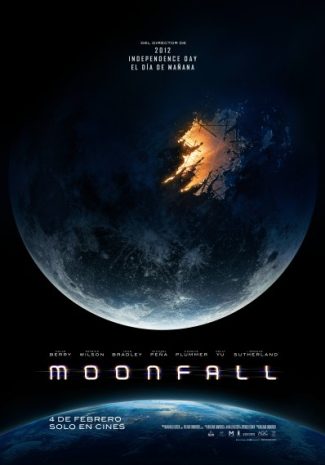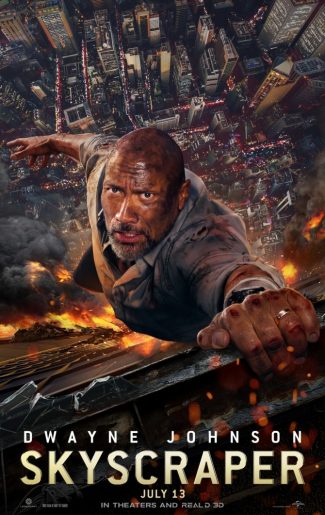It’s relatively unusual for a $140m budget SF movie to slip past me without registering at all on my radar, but then it’s also quite unusual for an $140m budget SF movie to be an independent production that gets released in the middle of winter, too late for the holiday season market and too early for anything else. Now that I think on it, I do remember Roland Emmerich’s Moonfall turning up in the local listings, but its only daily showing was at an awkward time of day and the reviews were giving off that special aroma inclined to give one pause.
Now, when it comes to Roland Emmerich and big-budget SF extravaganzas it seems fair to suggest that we are dealing with a textbook case of diminishing returns, for this is a furrow which the dude has been working, on and off, for thirty years or so – even longer, now I come to think of it, for we mustn’t forget Universal Soldier (much as we might wish to). But today let’s restrict ourselves to considering Independence Day (1996), in which the world is spectacularly devastated by aliens, The Day After Tomorrow (2004), in which the world is spectacularly devastated by bad weather, 2012 (2009), in which the world is spectacularly devastated by, I don’t know, neutrinos or something, and Independence Day: Resurgence (2016), in which the world is spectacularly devastated by aliens again. Now I don’t know about you, but I’m sensing a bit of a pattern there somewhere. But if Jane Austen can get away with doing the same kind of story time after time, why not Emmerich? Well, probably there are several sound reasons why not, but let’s think more about Moonfall instead, which is, in an absolutely accurate sense, completely more of the same sort of thing.
It opens in 2011 with problems for the space shuttle, which is being flown by top astronauts Patrick Wilson and Halle Berry (two actors who seem to have acquired the knack of sustaining pretty decent careers while seldom giving good performances in good movies). A big evil metal space cloud comes out of the moon and attacks the shuttle, killing the third member of the crew and forcing Wilson to do an emergency landing. The NASA enquiry isn’t falling for guff about big evil metal space clouds and Wilson is forced to carry the can, being drummed out of the space programme. Berry, on the other hand, gets to effectively be the boss of NASA only a few years later: funny old world, I guess.
Anyway, in what passes for the present day, deranged crank Dr K. C. Houseman (John Bradley) discovers that the moon is shifting in its orbit and moving closer to Earth, which is likely to cause various problems as it continues. As NASA very sensibly won’t take his calls, he tracks down Wilson, who is now a washed-up loser, and tries to persuade him of what he’s learned. Wilson is too busy with his troubled young son being on the verge of jail to pay very much attention to this.
NASA have also noticed this naughty lunar activity and send a rocket to investigate – which is promptly attacked and destroyed by the big evil metal space cloud. This time they do notice, but the question is what to do about the bigger problem of the fact that in a matter of days the moon is going to crash into the planet, spoiling everyone’s holiday plans in perpetuity. They figure out the evil metal space cloud is some sort of AI-controlled robot swarm which is attracted to electronic activity in the proximity of biological life, and Donald Sutherland is briefly wheeled on (literally) to point them towards a handy EMP bomb they could use on it.
But how to get there? They need an aging analogue spacecraft that won’t make the evil metal cloud suspicious, and also an aging analogue space pilot to fly the thing. Luckily Berry still has Wilson on speed dial, and soon enough the two of them, and Bradley’s character blast off to the increasingly close moon to sort it all out, while their families back home contend with the various disasters caused by super-high tides, gravity fluctuations, etc etc.
The graph of how much I like Emmerich SF extravaganzas is a strikingly consistent one, basically being a steadily-descending line from Independence Day (which I think I saw four times at the cinema) to its sequel (which in retrospect didn’t really warrant a single visit). Moonfall continues this trend, probably; I didn’t think it was possible for a film to be much more vacuous and dim than Resurgence, but what do you know, they manage it.
Where to start? Well, there’s actually a fairly decent big pulp SF idea at the heart of this film, derived from some of the wilder conjectures of UFO crankery – what looks like it’s going to be just another CGI disaster movie (and the word ‘disaster’ really is appropriate this time) turns out to have elements of epic space opera to it, once the mystery of the errant moon is solved. This is genuinely interesting, or at least has the potential to be; unfortunately it’s fighting for space in a bloated movie with all the travails of the folks back home, who are an unprepossessing bunch whose troubles are never that interesting. A shorter and more focused movie, with less of an obsession with absurd wide-screen calamity, would probably have worked better.
In other ways the popcorny nature of the Emmerich formula also seems to be wearing thin. The slightly tongue-in-cheek nature of the Independence Day script felt very fun and fresh at the time – five or six iterations it’s really rather laboured. The biggest dud note comes from John Bradley’s character – I’ve never seen him in anything else, but I’m going to be generous and assume he’s capable of better performances given competent scripts. Here he seems to be playing a Nick Frost or Simon Pegg kind of character, the audience-identification-geek, whose duties mainly involve the comic relief as well as ongoing exposition. The comic relief falls flat, while the exposition mainly consists of a sort of running commentary on whatever is happening on screen in that particular scene. When the cloud appears, Bradley screams ‘Look, it’s the cloud!’ When they seem to be trapped, he screams ‘We’re trapped!’ When the building they’re in starts flooding, he screams, ‘It’s flooding!’ When the space shuttle ends up underwater due to an unorthodox launch manoeuvre, Bradley screams ‘We’re underwater!’ It’s like having the film audio-described for the visually impaired by someone incapable of doing anything but shrieking. This is one of the most annoying characters I’ve ever seen in a movie, which really torpedoes the supposedly moving moment when he apparently sacrifices himself to save the others. (Miraculously, he does not scream ‘I’m sacrificing myself to save you!’ at this point.) Moving sacrifices from supporting characters should not draw sighs of relief and muttered comments that it happened about two hours too late into the movie from the audience, nor should their later miraculous resurrection provoke cries of ‘Oh, God, no!!!’
The threat of two Moonfall sequels does not seem likely to be realised, however, after this one tanked fairly spectacularly on its release. (‘We’re spectacularly tanking!’) It does seem like the formula which Emmerich and his former partner Dean Devlin put into practice with great success the first two or three times has reached the end of its shelf life, regardless of how good the CGI effects are. The ones here are pretty good, but the scenarios the film depicts – most obviously the climax, in which the moon swoops past overhead so close it scrapes the top off medium-sized mountains – are so outlandish as to be completely unbelievable.
There’s a subgenre in literary SF known as the BDO story, BDO standing for Big Dumb Object – these mainly concern mysterious and vast cosmic constructs appearing in the solar system and the human characters trying to figure out what they are and why they’re here. Clarke’s Rendezvous with Rama and Bear’s Eon are respectable examples of this sort of thing, emphasising the bigness of the genre. Moonfall, on the other hand, is a BDO story where the focus ends up squarely on the dumb. Enough, Roland, for pity’s sake; have a go at something new.





